Picture this: It’s Monday morning, and you’re settling in with your coffee, ready to update your website’s latest blog post. But when you try to log in, something feels off. The admin panel looks different, and suddenly you realize your website has been compromised. This nightmare scenario plays out thousands of times daily for CMS website owners, but it doesn’t have to be your story.
The Hidden Dangers Lurking in Your CMS
Content Management Systems like WordPress, Drupal, and Joomla power over 60% of all websites today. Think of your CMS as a house – while it provides a comfortable living space, every window and door is a potential entry point for intruders. Those intruders, in our case, are hackers who exploit common CMS vulnerabilities in increasingly creative ways.
WordPress: The Popular Target
WordPress, being the most popular CMS, naturally attracts the most attention from hackers. Imagine your WordPress site as a popular neighborhood – more traffic means more potential threats. We’ve seen countless cases where outdated plugins turned into unlocked backdoors:
Last month, our security team discovered a seemingly innocent WordPress site that had been quietly serving malware through an outdated contact form plugin. The site owner had no idea until their hosting provider suspended the account. The outdated plugin, like a rusty lock, had provided easy access for attackers.
Critical WordPress Security Measures:
- Install a robust security plugin that actively monitors file changes and blocks suspicious IPs
- Implement strong password policies and two-factor authentication
- Regularly update your core installation, themes, and plugins
- Use a web application firewall (WAF) to filter malicious traffic
- Maintain regular backups with easy restoration options
Drupal: The Enterprise Guardian
Drupal, often chosen for its robust security features, isn’t immune to threats. Picture Drupal as a high-security office building – impressive defenses, but still requiring constant vigilance.
We recently assisted a government agency whose Drupal site was targeted by a sophisticated attack. The attackers exploited a chain of minor vulnerabilities that, when combined, created a serious security breach. The solution involved not just patching the vulnerabilities but implementing a comprehensive security architecture.
Essential Drupal Security Strategies:
- Implement Drupal’s built-in security modules effectively
- Configure proper file and folder permissions
- Use secure development practices for custom modules
- Regular security audits and vulnerability assessments
- Monitor database access and query patterns
Joomla: The Flexible Target
Joomla’s flexibility is both its strength and potential weakness. Think of it as a modular home – easy to customize, but each addition needs proper security consideration.
One of our clients, an educational institution, found their Joomla site was being used to send spam emails. The culprit? A vulnerable third-party extension that provided a seemingly harmless social media integration feature.
Key Joomla Security Implementations:
- Enable two-factor authentication for all admin accounts
- Use Joomla’s built-in security features like strong password policies
- Regularly update the core CMS and all extensions
- Implement secure session management
- Monitor file integrity and database changes
Real-World Protection Strategies
The Multi-Layer Security Approach
Think of your CMS security like an onion, with multiple layers of protection:
- Outer Layer: Server-Level Security
- Configure your server firewall properly
- Implement DDoS protection
- Use secure protocols for file transfers
- Regular server security patches
- Middle Layer: CMS-Level Security
- Keep core files updated
- Monitor file changes
- Implement access controls
- Regular security scans
- Inner Layer: Content-Level Security
- Secure form submissions
- Validate user inputs
- Protect against SQL injection
- Secure media uploads
Common Attack Scenarios and Prevention
Let’s walk through some real scenarios we’ve encountered:
Scenario 1: The Plugin Vulnerability
A business website was compromised through an outdated social sharing plugin. The attackers injected malicious JavaScript that redirected visitors to phishing sites.
Prevention Measures:
- Maintain a plugin inventory
- Set up automatic update notifications
- Regular security scans
- Monitor website behavior
Scenario 2: The Brute Force Attack
A small business website faced thousands of login attempts per hour, eventually leading to a successful breach.
Protection Strategy:
- Implement progressive delays between login attempts
- Use CAPTCHA after failed attempts
- Block IPs with suspicious activity
- Monitor login attempts in real-time
Scenario 3: The Database Injection
An e-commerce site had customer data stolen through a vulnerable contact form that didn’t properly sanitize inputs.
Security Solutions:
- Input validation on all forms
- Prepared SQL statements
- Regular database security audits
- Data encryption at rest
Practical Implementation Steps
- Immediate Actions
- Run a complete security audit
- Update all software components
- Remove unused plugins/extensions
- Implement basic security measures
- Ongoing Maintenance
- Weekly security scans
- Monthly comprehensive audits
- Regular backup verifications
- Security policy reviews
- Emergency Response Plan
- Document recovery procedures
- Maintain backup restoration processes
- Create communication templates
- Establish response team roles
Conclusion: Your CMS Security Partner
At SecureWebsite.io, we understand that managing CMS security can be overwhelming. That’s why we offer comprehensive security solutions tailored to your specific CMS platform. Our security experts monitor your site 24/7, protecting against the latest threats while you focus on growing your business.
Ready to secure your CMS website? Contact us for a free security assessment and let us help you build an impenetrable security shield around your digital presence.
Published: January 16, 2025 | Author: SecureWebsite.io CMS Security Team
Get your free CMS Security Assessment Tool at SecureWebsite.io/cms-security-check
